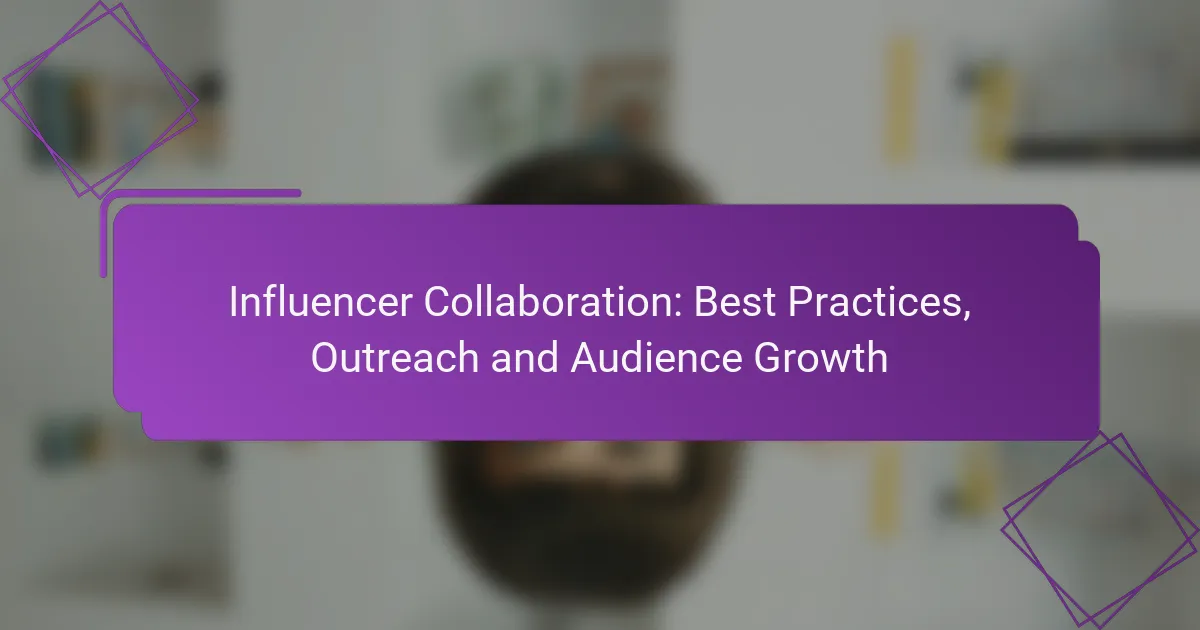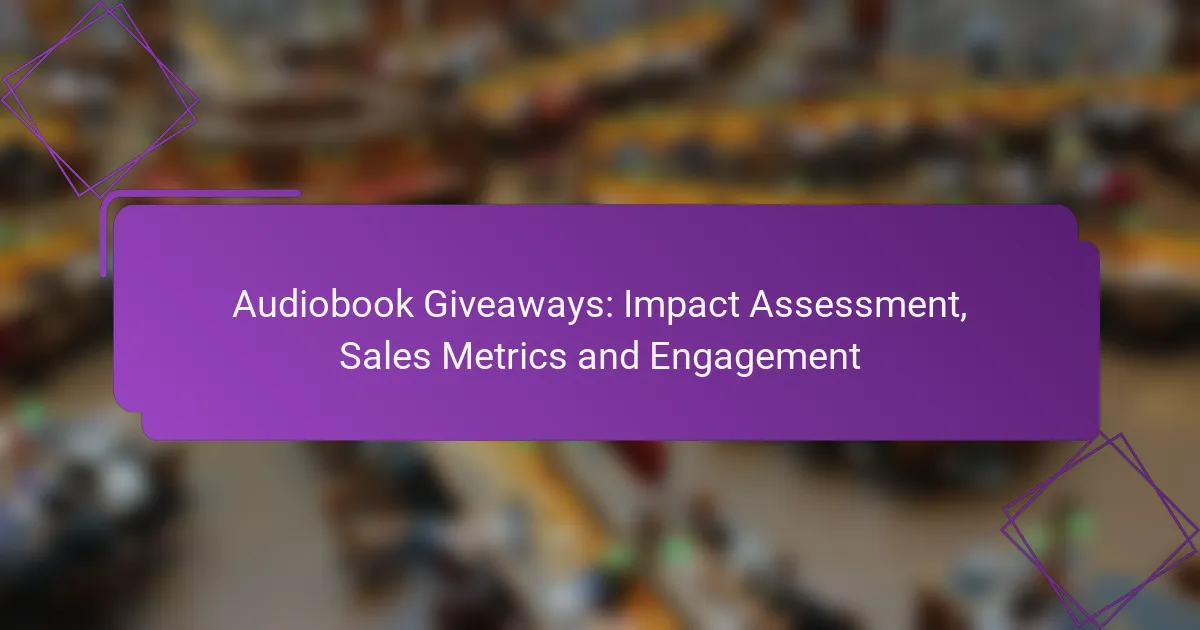Influencer collaboration in e-commerce is a powerful strategy to boost brand visibility and drive sales through strategic partnerships. By implementing best practices for outreach and communication, brands can effectively connect with influencers, ensuring that both parties benefit from the collaboration. This approach not only enhances brand awareness but also facilitates significant audience growth by leveraging the influencer’s established follower base.
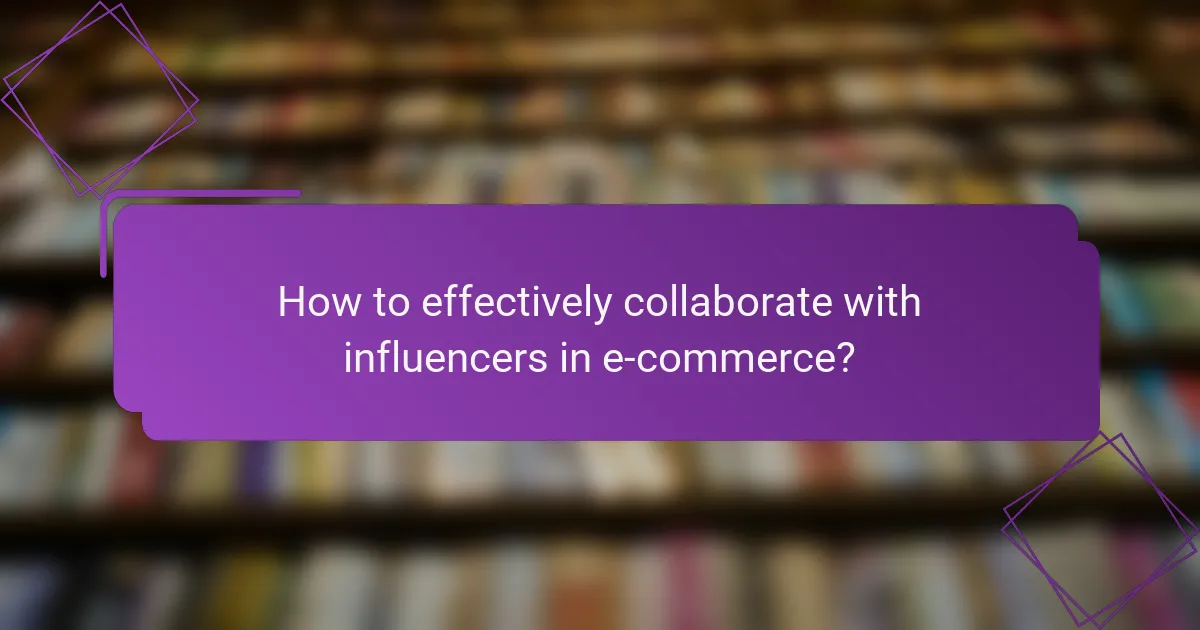
How to effectively collaborate with influencers in e-commerce?
Collaborating with influencers in e-commerce involves strategic partnerships that can enhance brand visibility and drive sales. Effective collaborations require careful planning, clear communication, and measurable goals to ensure mutual benefits for both the brand and the influencer.
Identify relevant influencers
Choosing the right influencers is crucial for successful collaboration. Look for individuals whose audience aligns with your target market, ensuring their followers are likely to be interested in your products. Tools like social media analytics can help identify influencers with high engagement rates and authentic connections with their audience.
Consider factors such as niche relevance, follower demographics, and previous collaboration success. Micro-influencers, with smaller but highly engaged audiences, can often yield better results than those with millions of followers.
Define collaboration goals
Establishing clear goals is essential for a fruitful influencer partnership. Determine what you aim to achieve, whether it’s increasing brand awareness, driving traffic to your website, or boosting sales for a specific product. Setting measurable objectives will help assess the effectiveness of the collaboration.
For example, you might aim for a specific percentage increase in website visits or a target number of sales generated through a unique discount code shared by the influencer.
Establish clear communication
Effective communication is key to a successful influencer collaboration. Clearly outline expectations, deliverables, and timelines from the outset to avoid misunderstandings. Regular check-ins can help keep both parties aligned and address any concerns promptly.
Utilize collaborative tools and platforms to streamline communication, ensuring that both you and the influencer can easily share updates, feedback, and content drafts.
Negotiate terms and compensation
Negotiating terms and compensation should be approached with transparency and fairness. Discuss the scope of work, including content types, posting schedules, and any exclusivity agreements. Compensation can vary widely, from free products to monetary payments, depending on the influencer’s reach and engagement.
Consider offering performance-based incentives, such as bonuses for achieving specific sales targets, to motivate influencers to promote your brand effectively.
Measure collaboration success
Evaluating the success of your influencer collaboration is vital for future partnerships. Use analytics tools to track metrics such as engagement rates, website traffic, and conversion rates linked to the campaign. This data will help you understand what worked and what didn’t.
After the campaign, conduct a review with the influencer to discuss outcomes and gather feedback. This can provide valuable insights for refining your approach in future collaborations.
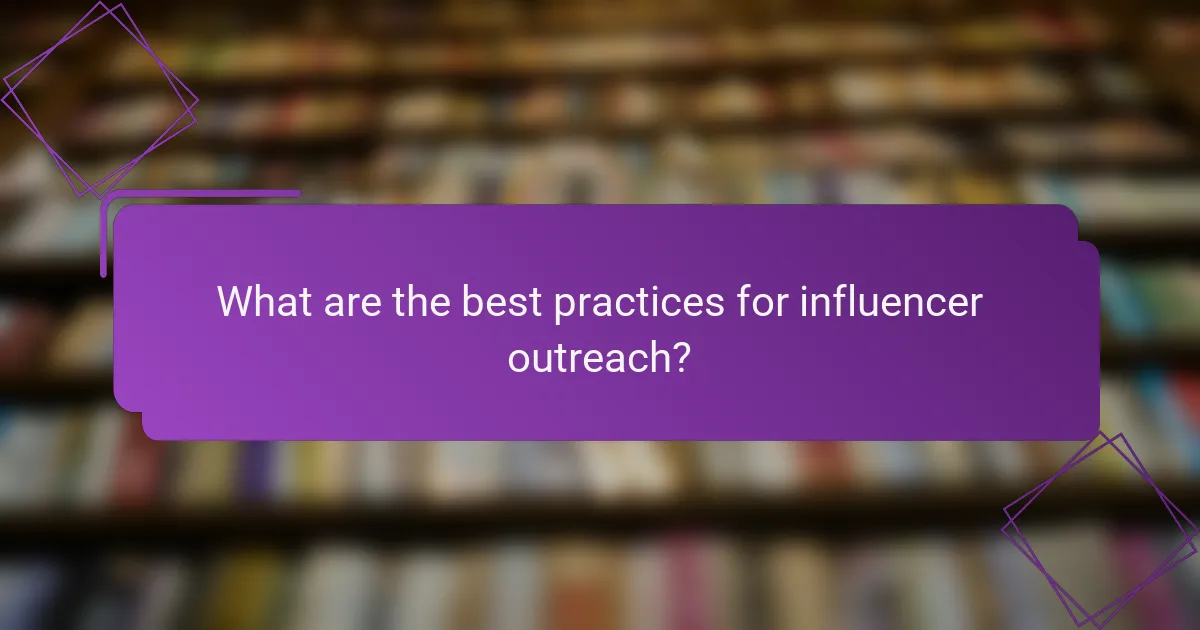
What are the best practices for influencer outreach?
The best practices for influencer outreach involve crafting personalized messages, leveraging social media platforms effectively, and following up in a strategic manner. These steps can significantly enhance your chances of securing collaborations that resonate with both the influencer’s audience and your brand’s goals.
Personalize outreach messages
Personalization is key when reaching out to influencers. Tailor your messages to reflect the influencer’s unique style, interests, and previous work. Mention specific posts or campaigns they have done that align with your brand to demonstrate genuine interest.
Avoid generic templates; instead, use the influencer’s name and reference their content to make your outreach feel authentic. This approach increases the likelihood of receiving a positive response.
Utilize social media platforms
Social media platforms are essential for influencer outreach. Identify which platforms your target influencers are most active on, whether it’s Instagram, TikTok, or YouTube, and engage with their content regularly. Commenting on their posts or sharing their work can help build rapport before you reach out directly.
Consider using direct messaging features on these platforms for a more personal touch. Ensure your profile is professional and clearly outlines your brand to make a strong impression when initiating contact.
Follow up strategically
Following up is crucial in influencer outreach, but it should be done thoughtfully. If you don’t receive a response within a week or two, send a polite follow-up message reiterating your interest. Keep it concise and friendly to maintain a positive tone.
Avoid bombarding influencers with multiple messages; instead, space out your follow-ups and consider varying your approach. If they still don’t respond, it may be best to move on to other potential collaborators rather than risking a negative impression.
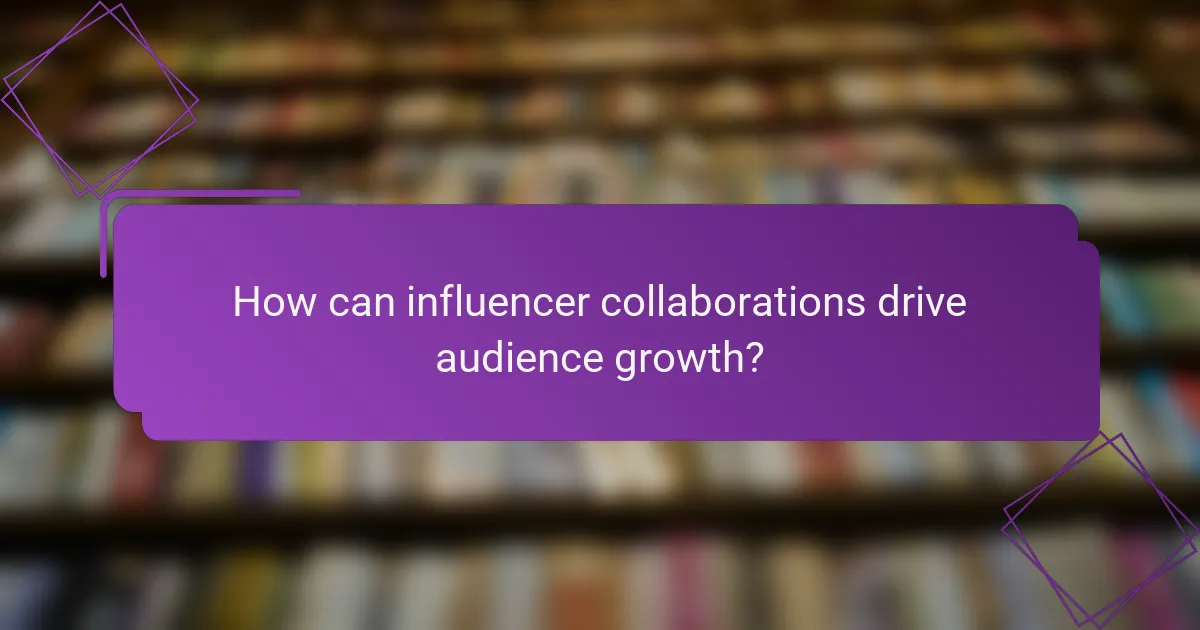
How can influencer collaborations drive audience growth?
Influencer collaborations can significantly enhance audience growth by tapping into the established follower base of influencers. By partnering with the right influencers, brands can reach new potential customers and expand their visibility in a crowded market.
Leverage influencer reach
Influencers often have large, engaged audiences that brands can access through collaboration. By selecting influencers whose followers align with your target demographic, you can effectively amplify your message and increase brand awareness. Consider influencers with follower counts ranging from thousands to millions, depending on your budget and goals.
When reaching out, clearly define your objectives and how the influencer’s reach can help achieve them. This ensures that both parties understand the potential impact of the collaboration.
Engage with new audiences
Collaborating with influencers allows brands to engage with audiences they may not have reached otherwise. Influencers often have niche followings that can introduce your brand to specific market segments. This engagement can lead to higher conversion rates as the audience is more likely to trust recommendations from familiar faces.
To maximize engagement, create interactive content such as polls or Q&A sessions that encourage audience participation. This not only fosters a sense of community but also provides valuable insights into audience preferences.
Create authentic content
Authenticity is key in influencer collaborations. Content that feels genuine resonates more with audiences and can lead to stronger connections with your brand. Encourage influencers to share their personal experiences with your product or service, as this can enhance credibility and relatability.
Consider co-creating content that reflects both your brand’s values and the influencer’s style. This collaborative approach can produce unique and engaging content that stands out and drives audience growth effectively.

What criteria should be considered when selecting influencers?
Selecting influencers requires careful consideration of several key criteria to ensure effective collaboration. Factors such as audience demographics, engagement rates, and brand alignment are crucial in identifying the right influencer for your marketing goals.
Audience demographics
Understanding the audience demographics of an influencer is essential for effective targeting. Analyze factors such as age, gender, location, and interests to ensure their followers align with your target market. For example, if your product appeals to young adults, seek influencers whose audience primarily consists of this age group.
Utilize tools like social media analytics or influencer marketing platforms to gather demographic insights. This data helps you assess whether the influencer’s audience is likely to engage with your brand and convert into customers.
Engagement rates
Engagement rates indicate how actively an influencer’s audience interacts with their content. High engagement rates, typically ranging from 1% to 5%, suggest that followers are genuinely interested in the influencer’s posts. Look for influencers who consistently receive likes, comments, and shares, as this reflects their ability to connect with their audience.
When evaluating engagement, consider the type of content as well. Influencers with lower follower counts but high engagement may offer better value than those with large followings but minimal interaction.
Brand alignment
Brand alignment is about ensuring the influencer’s values, style, and content resonate with your brand identity. Collaborating with influencers who share similar beliefs and aesthetics can enhance authenticity and credibility. For instance, if your brand promotes sustainability, partner with influencers who prioritize eco-friendly practices.
Review past collaborations and content to gauge how well the influencer represents brands. Misalignment can lead to a disconnect with audiences and diminish the effectiveness of your campaign.
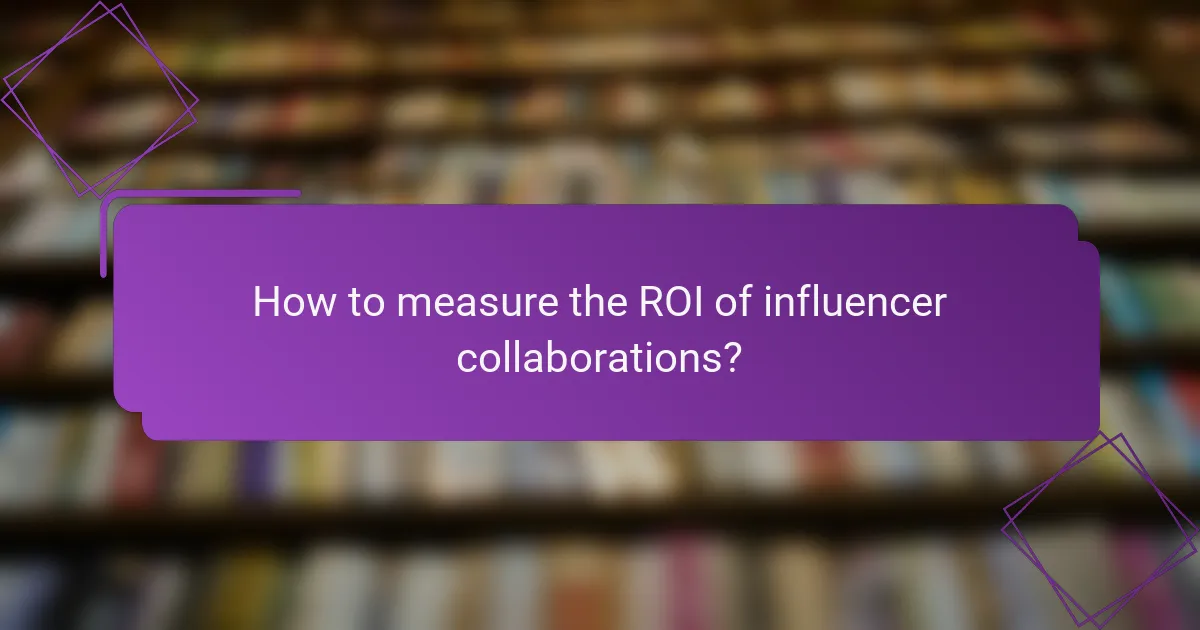
How to measure the ROI of influencer collaborations?
Measuring the ROI of influencer collaborations involves evaluating the financial returns generated from these partnerships against the costs incurred. Key metrics include sales conversions, engagement rates, and brand awareness, which can provide insights into the effectiveness of the collaboration.
Track sales conversions
Tracking sales conversions is essential for understanding the direct financial impact of influencer collaborations. This can be done by using unique discount codes or affiliate links that influencers share with their audience, allowing you to attribute sales directly to their efforts.
To effectively measure conversions, set clear goals before the campaign begins. For example, aim for a specific percentage increase in sales over a defined period. Regularly analyze sales data to assess whether the influencer’s audience is translating into actual purchases.
Common pitfalls include failing to account for external factors that may influence sales, such as seasonal trends or competing promotions. Ensure you isolate the influencer’s impact by comparing sales data before, during, and after the collaboration.
